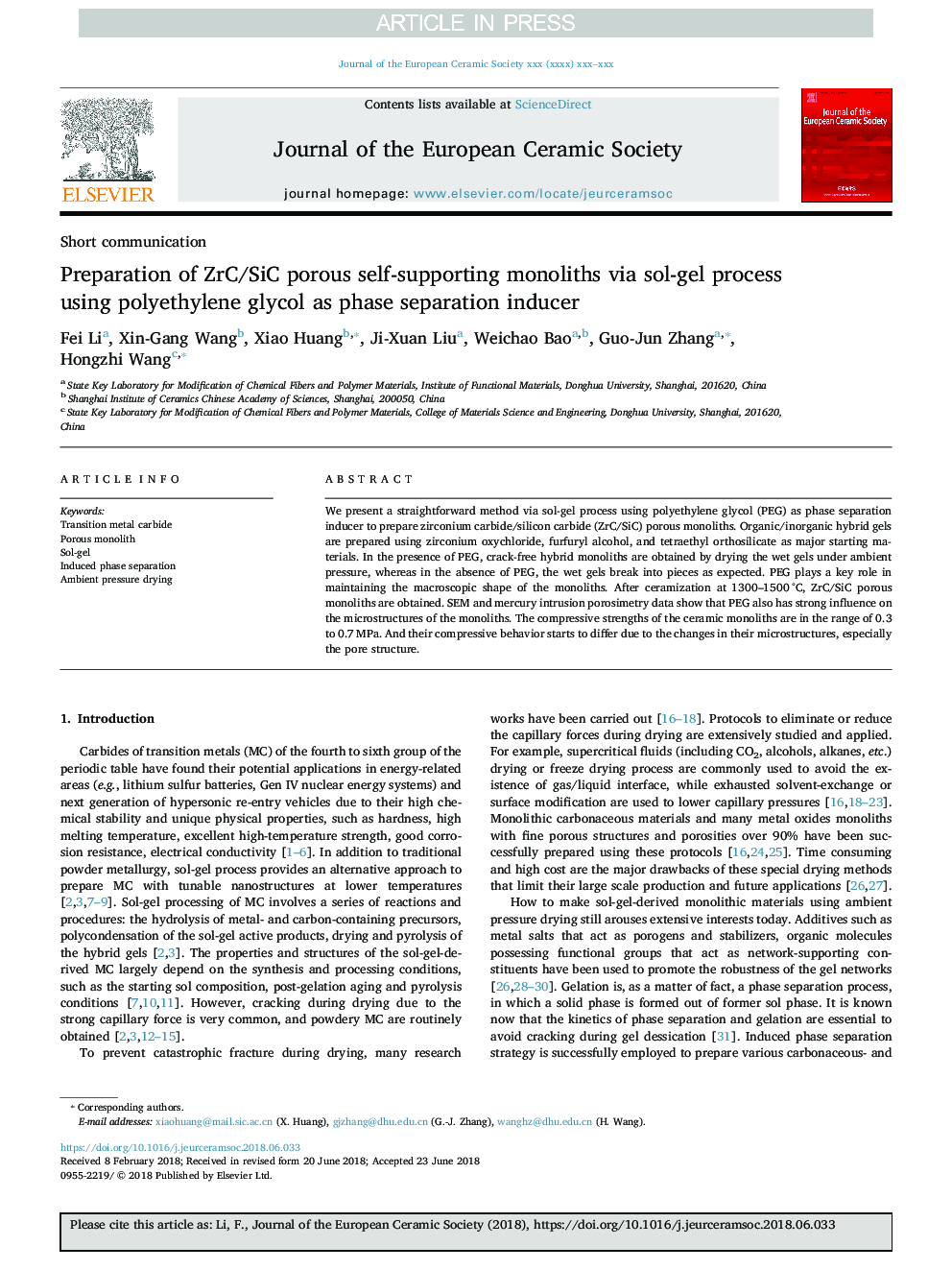| Article ID | Journal | Published Year | Pages | File Type |
|---|---|---|---|---|
| 7897785 | Journal of the European Ceramic Society | 2018 | 8 Pages |
Abstract
We present a straightforward method via sol-gel process using polyethylene glycol (PEG) as phase separation inducer to prepare zirconium carbide/silicon carbide (ZrC/SiC) porous monoliths. Organic/inorganic hybrid gels are prepared using zirconium oxychloride, furfuryl alcohol, and tetraethyl orthosilicate as major starting materials. In the presence of PEG, crack-free hybrid monoliths are obtained by drying the wet gels under ambient pressure, whereas in the absence of PEG, the wet gels break into pieces as expected. PEG plays a key role in maintaining the macroscopic shape of the monoliths. After ceramization at 1300-1500â¯Â°C, ZrC/SiC porous monoliths are obtained. SEM and mercury intrusion porosimetry data show that PEG also has strong influence on the microstructures of the monoliths. The compressive strengths of the ceramic monoliths are in the range of 0.3 to 0.7â¯MPa. And their compressive behavior starts to differ due to the changes in their microstructures, especially the pore structure.
Related Topics
Physical Sciences and Engineering
Materials Science
Ceramics and Composites
Authors
Fei Li, Xin-Gang Wang, Xiao Huang, Ji-Xuan Liu, Weichao Bao, Guo-Jun Zhang, Hongzhi Wang,
